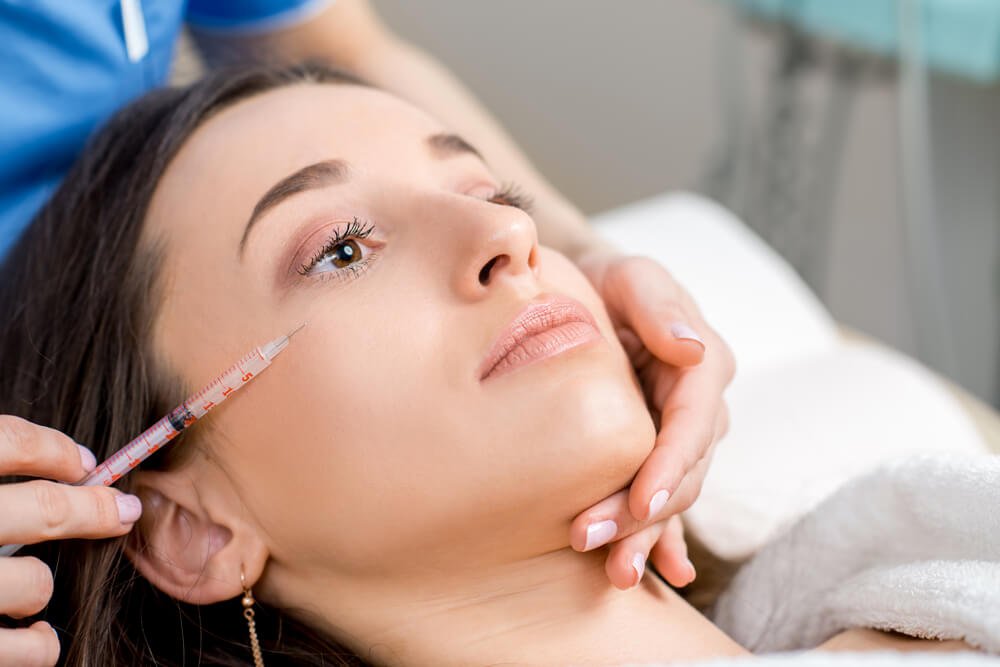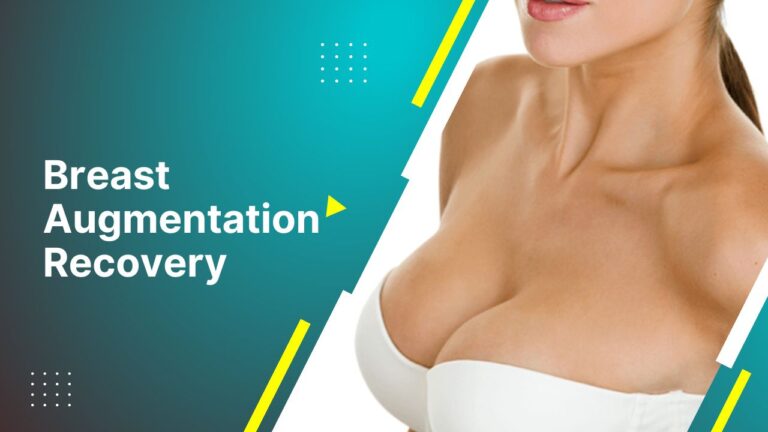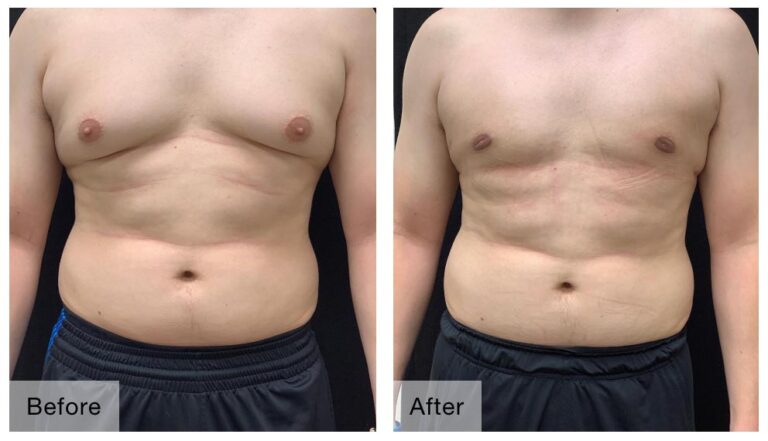Does Botox cause eyelid droop? How do I fix it? Are there other ways to avoid eyelid drooping? Let’s find out! This article will answer all these questions and more! Keep reading to learn how to prevent eyelid drooping after Botox. Droopy eyelids are common side effects of Botox treatment.
It is common for Botox to cause droopy eyelids after treatment, but the effect is temporary. Botox is made to reach a small portion of the muscle that raises the eyelid and will last for three to four months, although some patients will experience droopy eyelids for up to six months. If you suffer from this problem after Botox treatment, you should wait until it wears off and then seek further treatments if you notice the problem persists.
Despite popular beliefs, it is rare for patients to experience droopy eyelids following a botox injection. While these side effects can be uncomfortable, the good news is that they usually subside within 3 to 7 days. If you are wondering if botox treatment can cause droopy eyelids, read on for some helpful tips.
What causes droopy eyes after botox?
If you have Botox injected between your eyes, the toxin can migrate to the upper eyelid area. This will relax the levator palpebrae, the muscle that controls your upper eyelid. When this happens, your eyelid will begin to droop. It may also affect the frontalis muscle, the area of your forehead that keeps your eyebrows up.
Book A Consultation With Dr Tarek Bayazid
Installment Plan Available
Droopy eyes can also occur if the muscles around the eye are already relaxed, and this can lead to the appearance of “lazy eye.” If the droopiness becomes severe, it may interfere with vision and daily activities. To avoid complications, it is important to consult with a board-certified dermatologist or plastic surgeon before undergoing Botox treatment.
Location and Pattern of the Botox Injections
Botox can cause eyelid drooping if it is injected in the forehead area. The location and pattern of the injections may cause droopy eyes after botox. Therefore, it is essential to visit a qualified dermatologist or a plastic surgeon specializing in surgeries and procedures for the face.
Medical History
Moreover, there are several factors that can cause droopy eye after Botox injection. If you have undergone facial surgery or have Bell’s palsy, you have an increased risk of developing droopy eyelids. Your doctor should also know your medical history, including your recent cosmetic treatments, medications, and lifestyle habits. Depending on your personal history, your doctor may postpone your treatment or suggest alternative procedures.
Also, be sure to disclose any current medications or medical conditions that you are currently taking. These may affect the treatment and your doctor may decide to postpone your procedure or suggest alternative treatments.
Experience of the Doctor
Botox injections given by inexperienced surgeon often lead to droopy eyes after botox. The medical professional giving the botox injection should be skilled and experienced to minimize the risk of droopy eyes. Inexperienced doctors may also cause long-term damage to your eyes.
5% of Botox patients develop droopy eyes after the procedure. But that figure drops to under 1% if the injector is a professional. In this situation, the injection technique, dilution, and level of experience can all contribute to the severity of the side effect.
Botox in areas other than the eyelid
Droopy eyelids can also be caused by botox injections in areas other than the eyelid. If this happens, your doctor may suggest a medication or a procedure to correct the problem. If it continues, you should visit a doctor or a dermatologist.
Amount of Botox
Droopy eyelids may also be due to an incorrect amount of Botox injections. Inexperienced doctors and surgeons often inject too much of the product or in the wrong place, which can lead to droopy eyelids.
Full Day of Rest Before Botox
Before your injection, you should rest for a day or two to allow the Botox to take effect. As Botox injections should only be given to the eyelids after a full day of rest.
Ptosis
People with ptosis often suffer from upper eyelid drooping as a result of a Botox injection. This droopiness is caused by the nerve signals that are sent by the brain to the muscles in the forehead. This elevation can only be maintained for short periods of time, as repeated elevation and relaxation stretches the ligaments in the forehead and makes the eyelid droopy. While the droopy eyelid caused by Botox is temporary, it usually resolves itself after three or four weeks.
Treatment of Droopy eyes after botox
It is possible to treat this problem with proper medication prescribed by your doctor. Before you decide to undergo a Botox treatment, make sure that you see a doctor who is board certified in dermatology, plastic surgery, or medicine. Injections can cause serious side effects if they are done incorrectly.
If you are interested to learn about Botox for Nose you can definitely checkout our website for more
How to choose the right doctor for botox?
A reputable board-certified dermatologist or plastic surgeon who specializes in the procedures for the face. In addition to their experience and training, they also know facial musculature well and can prescribe the right dosage.
Before you go in for Botox injection, you should research the facility where your chosen dermatologist or surgeon is performing the procedure to ensure you receive the highest standards of hygiene and patient care.
Book a consultation with a cosmetic surgeon prior to the procedure. Make sure to to ask questions and discuss your medical history with him/her during the consultation. While a generic solution is widely available, a physician’s experience and expertise are critical. Injecting Botox into your eyelids can cause droopy eyelids if your surgeon didn’t properly assess your medical history. To avoid this, you should choose a qualified cosmetic surgeon. Find out about the cost of Botox In Dubai.
FAQs
How long will my droopy eye from botox last?
Droopy eyelids after Botox treatment are a temporary side effect and will usually go away on their own in 4 to 6 weeks.
What to expect if my eyelids continue to droop after botox?
if you have suffered from this side effect longer than 6 weeks, it is important to visit an experienced doctor. While you shouldn’t experience serious side effects from Botox injections, droopy eyelids can occur if the treatment is not performed properly.
Is the eyelid droop from botox permanent?
Droopy eyelids following Botox treatment are a temporary side effect of the treatment and should return to normal within four to six weeks. If they do not, you can return to your doctor for additional Botox treatments. Most cases of droopy eyelids disappear on their own, but some patients may experience persistent drooping after Botox treatment.
How to get rid of droopy eyes after botox?
If your eyelids are droopy after Botox, you should visit your eye doctor to get the right treatment. You can try the prescribed medications to get rid of and camouflage the droopy eyes. To ensure the safety and effectiveness of your Botox treatment, visit a board-certified cosmetic surgeon or dermatologist. Many botox users end up using too much product or injecting the wrong area.
Does botox in the forehead cause droopy eyes?
If the Botox is injected into the forehead, it will diffuse through the area and cause the levator muscle to relax. The levator palpebrae is a muscle that controls the upper eyelid. If the levator palpebrae is paralyzed, the eyelid will droop.
How to prevent droopy eyes after botox?
After Botox injections for wrinkles, you may have a higher risk of developing eyelid drooping. Your response may depend on your age, skin type, and past sun damage. The best way to avoid eyelid drooping is to avoid massaging your face and rubbing it for at least a day after the injection. This will help prevent any medication from spreading around and causing an undesirable effect.
Besides, it can be prevented by using apraclonidine eye drops, which stimulate the muscle that holds your eyelids up. You must seek professional advice before using any eyedrops.
Can botox for migraine cause droopy eyelids?
In order to treat a migraine, doctors typically prescribe Botox. Droopy eyelids are a common side effect of botox for migrane. Your doctor will tell you what to expect. It’s worth a shot, especially if you’re worried about wrinkles or a severe migraine.
The dosage for Botox for migraine is 155 units. That’s 31 injections in seven different areas of the head and neck. Each site receives 0.1 milliliters of Botox, which equals 5 units. Treatments typically last for twelve weeks, and if you’re having a chronic migraine, your doctor may recommend more frequent injections.
If your doctor does recommend Botox for migraine, you should ask if there are any side effects. This treatment is safe and effective, but you should speak with a doctor before undergoing it.
Conclusion
Botox is a cosmetic treatment that minimizes wrinkles and fine lines in the face. However, there are possible side effects, and one of the most common is droopy eyelids. While this is rare, you should visit a dermatologist for the procedure in order to prevent it. Your doctor should be familiar with Botox treatment and be able to provide you with a safe, effective injection. Fortunately, Botox injections have many other beneficial effects on the face. If you are concerned about the potential side effects of Botox, you may want to seek medical advice from a Certified plastic surgeon or dermatologist.









